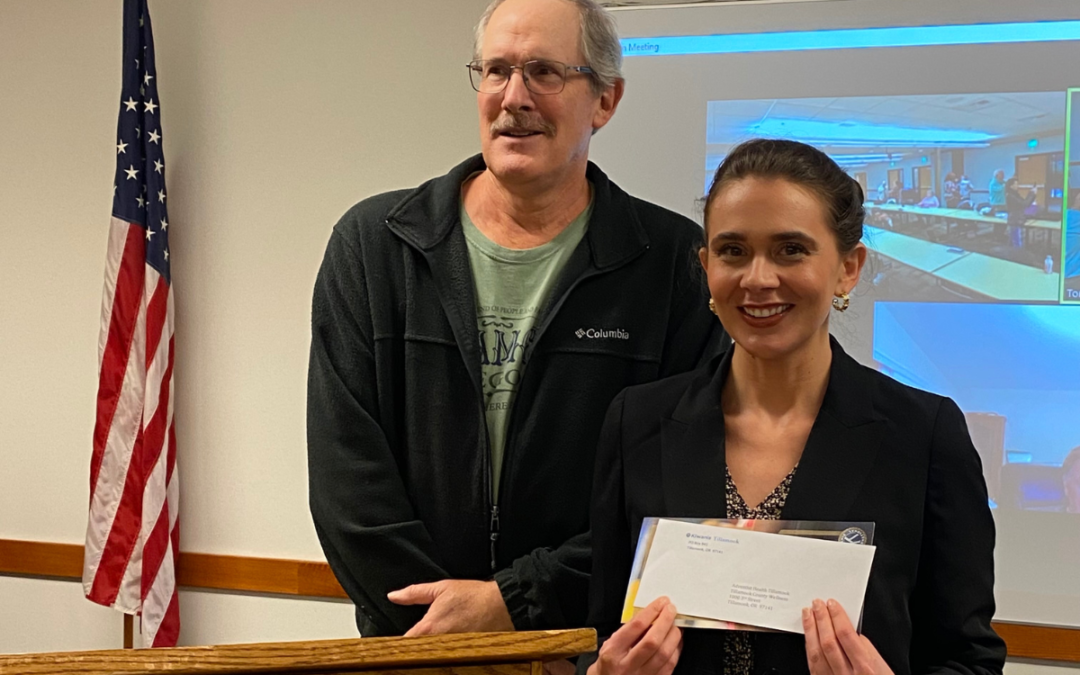
by Michelle | Oct 5, 2023 | Being Well, Featured, Work Well
To promote the well-being and growth of children, access to regular physical activity is essential. Over the past three years, Tillamook County Wellness’ Health Promotions Committee has been offering fun, physical activity programs designed to introduce families to local outdoor recreational opportunities. Where participants qualify for exciting prize drawings.
Historically, we’ve collaborated with schools, local libraries, the Oregon Food Bank, and various community partners to promote these activities. Thanks to the generosity of our donors, we’ve been able to incentivize participation through rewarding prizes.
Tillamook County Wellness would like to encourage more family participation, especially among families with children aged 0-17 years. Since younger children might not have the means or easy access to parks and other physical activity locations on their own, they depend on older family members for transportation and motivation. This realization has led us to develop a more deliberate strategy for engaging families in 2024.
We plan to identify and acquire participation prizes that are specifically appealing to families. The Kiwanis Community Giving Award Funds will play a crucial role in enabling us to achieve this goal.
Tillamook County Wellness extends its heartfelt gratitude to be the recipients of the Kiwanis Community Giving Fund. Their support is invaluable in helping us achieve our mission of promoting health and well-being in our community to young children in Tillamook County.
Picture of: Janeane Krongos of Tillamook Family Counseling Center and Ron Rush of Tillamook Kiwanis Club
Tillamook County Wellness is a community-driven initiative with a primary focus on reducing the risk of chronic diseases by promoting healthy behaviors from an early age. We believe that by making healthy choices more accessible and enjoyable, we can cultivate thriving and vibrant communities.

by Guest | Sep 3, 2023 | Being Well, Featured, Work Well
Each year, lives are lost due to suicide. Suicide is an intentional self-inflected death. This cause
of death is complex and is typically a result of many factors in a person’s life. These factors are
often referred to as risk factors. A risk factor is a condition, characteristic, or attribute that can
increase the risk of a negative outcome. Examples of suicide risk factors include: a previous
suicide attempt, access to lethal means, social isolation, lack of access of care, problem
gambling, substance use disorder, loss of a loved one (especially by suicide), and a stigma of
discussing mental health. If you would like to learn more about risk factors, I recommend the
CDC’s Risk and Protective Factors, this resource can be accessed on the CDC’s
website(www.cdc.gov).
Suicide is a leading cause of death in the United States and in Oregon. According to the Centers
for Disease Control and Prevention (CDC), in the year 2021, suicide was the 11th leading cause
of death in the United States. The CDC’s data shows that in the year 2021 there were 48,183
suicide deaths in the United States. For more information about national suicide statistics visit
www.cdc.gov. According to the Oregon Health Authority (OHA), in the year 2021, suicide was
the 10th leading cause of death in Oregon. OHA’s Center for Health Statistics data shows that
893 Oregonians died by suicide in the year 2021. For more information the state level suicide
statistics visit www.oregon.gov.
The good news is that this cause of death is preventable. One way to prevent suicide is to
increase protective factors. Protective factors are a characteristic, attribute, or condition that
can decrease a negative health outcome. Protective factors include: a connection with others,
access to mental health care, access to basic needs, reduced access to lethal means, coping
strategies, and problem-solving skills. For more information about protective factors, I
recommend the American Foundation for Suicide Prevention’s (AFSP) Risk factors, Protective
Factors, and Warning Signs, this resource can be accessed on the AFSP website (www.afsp.org).
If you would like to learn more about suicide prevention, I recommend attending a Question,
Persuade, and Refer (QPR) Gatekeeper training. This training is an evidence-based suicide
prevention training that has been used worldwide. In this training participants learn about
suicide, suicide warning signs, conversations tips, and the three steps of QPR. After the
completion of the training participants will receive a certificate, QPR Institute booklet, and
other relevant prevention information.
Since the year 2020, the Tillamook Family Counseling Center (TFCC) has offered the QPR
Gatekeeper training to community members every other month (or as requested). From
September 2020-August 2023, TFCC prevention staff has offered 32 QPR Gatekeeper trainings
(29 in English and 3 in Spanish) and have trained close to 300 community members. This past
year, TFCC has begun to offer QPR Gatekeeper trainings in the Spanish language. If you would
like to learn more about this new offering, please contact Angelicao@tfcc.org. TFCC will present
a virtual English QPR Gatekeeper training on September 11th from 10-11:30AM. If you would
like to register for this training email me at Janeanek@tfcc.org.
If you are having thoughts about suicide, you are not alone, help is available. For local crisis
support call the Tillamook County 24/7 crisis support at (503)842-8201. For national support
call the 988 Suicide and Crisis Lifeline at 988 or the Suicide Prevention Lifeline at (800)273-
8255.
If you should have questions about this blog. Please feel free to contact Janeane at
Janeanek@tfcc.org.
AUTHOR: Janeane Krongos, Tillamook Family Counseling Center, CPS
For more local health and wellness information, visit www.tillamookcountywellness.org or follow Tillamook County Wellness on Facebook, Instagram and Twitter.

by Guest | Oct 8, 2020 | Being Well
What a year 2020 has been! Each new emergency or disaster has highlighted the frontline heroes: doctors, nurses, paramedics, firefighters, and more. As we watch these courageous people respond to unthinkable challenges, and as some even lose their life doing so, we could begin to feel powerless about what we as ordinary people can do to help. Don’t lose hope! There is much we can do to help.
Start where you are. Look around you in these four areas and find ways that you can help.
In your circle of family and friends: Does someone you know need help? They might not be able to ask for help, for example if they are overwhelmed by responding to the immediate needs of their crisis. Can you bring meals, even simple things like soup or takeout? Can you help clean up after the meals that others have brought? Can you text or call regularly for friendly visiting? Keep in mind that personal and regional phone lines can become overwhelmed during a crisis and time your calls carefully.
In your faith community or civic groups: Does someone need help? Is there a community project that needs volunteers, whether doers or planners or supporters? Doers to get visible things done. Projects also need planners and behind-the-scenes support people. For example, in the early days of COVID pandemic response, a group of Tillamook County community volunteers came together to make and distribute cloth face coverings. Some did the sewing, some offered to buy supplies, and some drove the finished products to drop-off points around the County.
In your personal bounty: Do you have money or things (in new/like-new condition, but that’s another article) that you can give? Ask or do some research before deciding what to give. Sometimes money is most helpful. Sometimes things like clothing would be helpful but may cost more money in logistics getting them delivered than it would cost to just give money to a nonprofit or civic group onsite.
Many nonprofits and faith communities have ways to give online. Many of us also do our banking online and can easily set up a nonprofit or faith community to get a check. When you give, be thoughtful. Know which organizations you trust and decide whether you would like to focus your giving more locally or regionally. To learn more, go to the organization’s website or to a third party like Candid.org where you can look up mission and financial information about local, national and global nonprofits.
In your thoughts and prayers: Think positive thoughts. Pray. Even if you aren’t part of a faith community, expressing gratitude for the blessings you do have and believing that a higher power may be listening to your spoken and unspoken prayers can be helpful. Expressing gratitude has been shown to increase your happiness and decrease stress and pain. Believing in God and praying for grace and courage for yourself and others can inspire healing and hope.
So, take a deep breath. And pick at least one thing you will do this week to take action as an ordinary citizen.
AUTHOR: Melody Ayers, Philanthropy Director of Adventist Health Tillamook
For more local health and wellness information, follow Tillamook County Wellness on Facebook, Instagram and Twitter.



